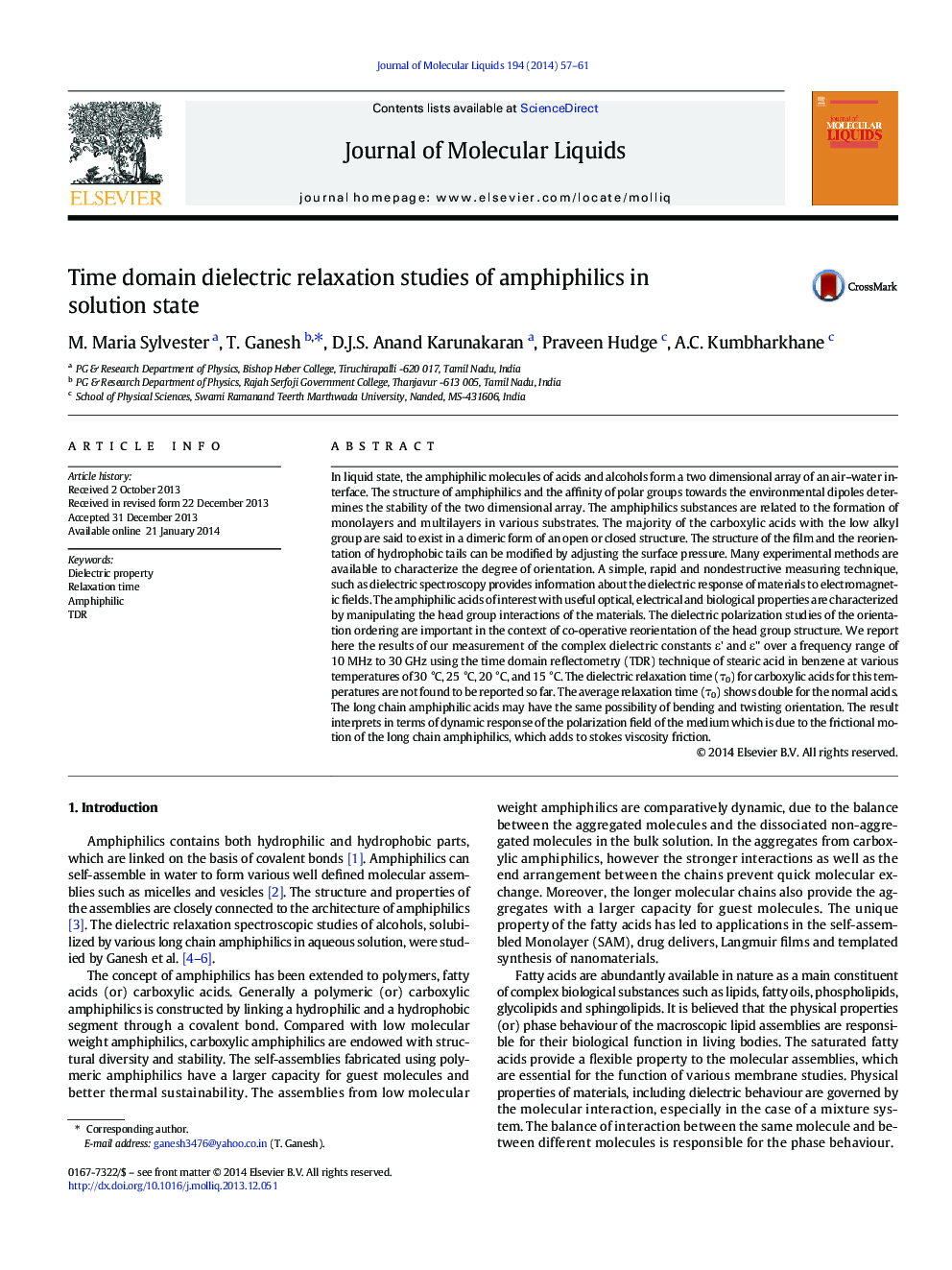| کد مقاله | کد نشریه | سال انتشار | مقاله انگلیسی | نسخه تمام متن |
|---|---|---|---|---|
| 5411502 | 1506576 | 2014 | 5 صفحه PDF | دانلود رایگان |
عنوان انگلیسی مقاله ISI
Time domain dielectric relaxation studies of amphiphilics in solution state
ترجمه فارسی عنوان
مطالعات آرامبخشی دامنه زمان آمفیفیلیک در حالت راه حل
دانلود مقاله + سفارش ترجمه
دانلود مقاله ISI انگلیسی
رایگان برای ایرانیان
کلمات کلیدی
موضوعات مرتبط
مهندسی و علوم پایه
شیمی
شیمی تئوریک و عملی
چکیده انگلیسی
In liquid state, the amphiphilic molecules of acids and alcohols form a two dimensional array of an air-water interface. The structure of amphiphilics and the affinity of polar groups towards the environmental dipoles determines the stability of the two dimensional array. The amphiphilics substances are related to the formation of monolayers and multilayers in various substrates. The majority of the carboxylic acids with the low alkyl group are said to exist in a dimeric form of an open or closed structure. The structure of the film and the reorientation of hydrophobic tails can be modified by adjusting the surface pressure. Many experimental methods are available to characterize the degree of orientation. A simple, rapid and nondestructive measuring technique, such as dielectric spectroscopy provides information about the dielectric response of materials to electromagnetic fields. The amphiphilic acids of interest with useful optical, electrical and biological properties are characterized by manipulating the head group interactions of the materials. The dielectric polarization studies of the orientation ordering are important in the context of co-operative reorientation of the head group structure. We report here the results of our measurement of the complex dielectric constants ε' and ε" over a frequency range of 10 MHz to 30 GHz using the time domain reflectometry (TDR) technique of stearic acid in benzene at various temperatures of 30 °C, 25 °C, 20 °C, and 15 °C. The dielectric relaxation time (Ï0) for carboxylic acids for this temperatures are not found to be reported so far. The average relaxation time (Ï0) shows double for the normal acids. The long chain amphiphilic acids may have the same possibility of bending and twisting orientation. The result interprets in terms of dynamic response of the polarization field of the medium which is due to the frictional motion of the long chain amphiphilics, which adds to stokes viscosity friction.
ناشر
Database: Elsevier - ScienceDirect (ساینس دایرکت)
Journal: Journal of Molecular Liquids - Volume 194, June 2014, Pages 57-61
Journal: Journal of Molecular Liquids - Volume 194, June 2014, Pages 57-61
نویسندگان
M. Maria Sylvester, T. Ganesh, D.J.S. Anand Karunakaran, Praveen Hudge, A.C. Kumbharkhane,
